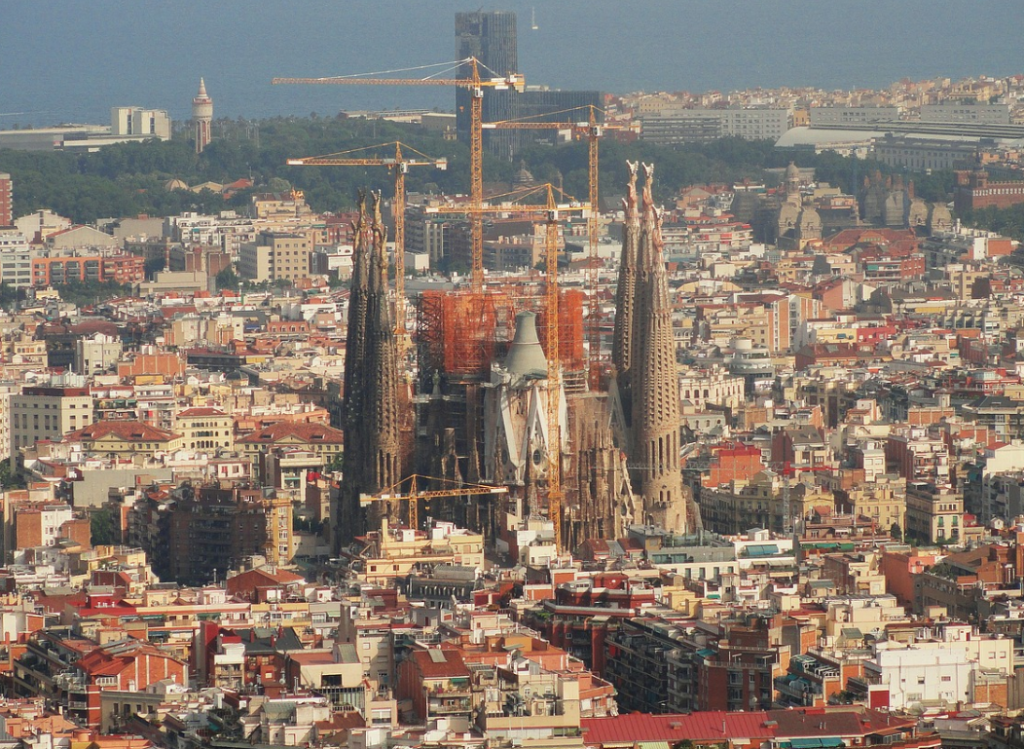It’s one of the most remarkable churches in the entire world, and in this post, you’ll discover the ultimate list of facts about the Sagrada Familia.
1. It’s Gaudí’s most prominent work
If there’s one architect that has left his mark on a city, then it’s Antoní Gaudi in Barcelona. His unique style can easily be recognized and he’s considered to be the main exponent of the Catalan Modernist style.
He was actually able to outgrow the modernism style and put his own unique twist to it, for the most part, based on the biggest passions in his life, nature, and religion.
Apart from prime examples of his unique style such as the Casa Milà and the Casa Battló, the Sagrada Familia church is definitely his most famous work.
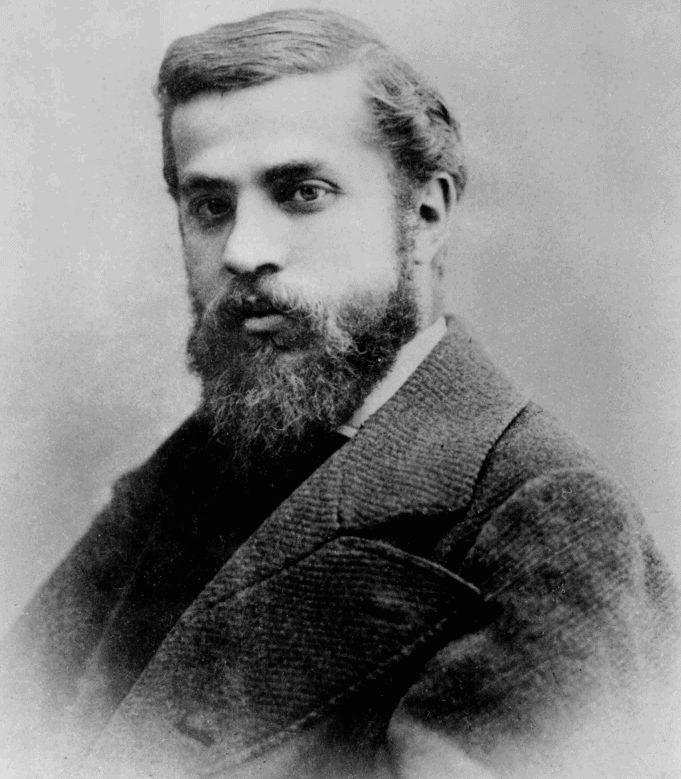
2. A trip to Italy inspired its construction
When bookseller Josep Maria Bocabella went on a trip to the Vatican Museum back in 1872, he was so inspired that he wanted to construct the same church in Barcelona as the one he saw on his trip.
One would expect that his inspiration would be to reconstruct St. Peter’s Basilica, the biggest Catholic Church in the world, but that wasn’t correct.
During his trip, he visited the Basilica della Santa Casa, a shrine of Marian Pilgrimage in Loreto, eastern Italy.
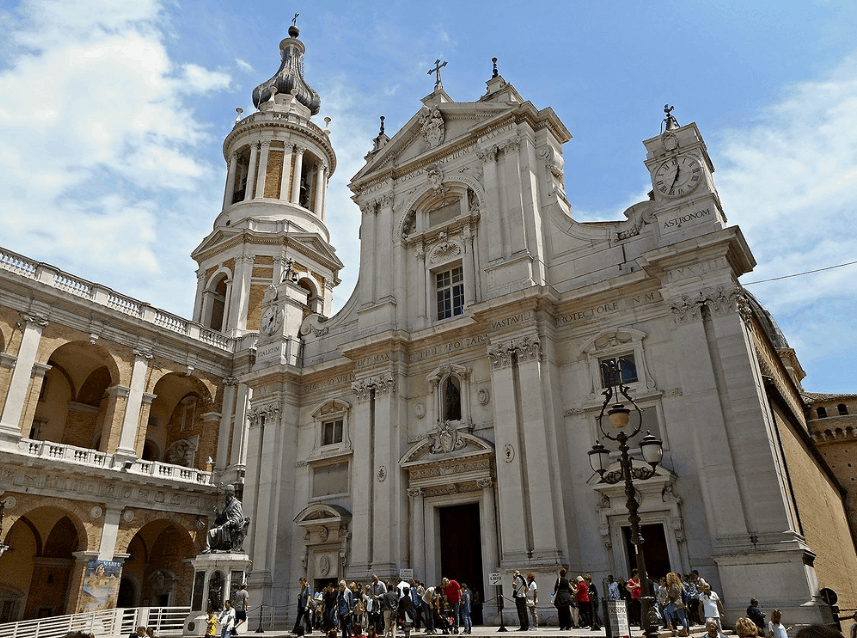
3. Construction started in 1882
When Josep Maria Bocabella, the founder of the Asociación Espiritual de Devotos de San José (Spiritual Association of Devotees of St. Joseph), returned from Italy, he was determined to build a church like the one he discovered in Loreto.
He instantly started collecting donations for construction to start through his organization. 10 years after his visit, he finally had enough money to start building the apse crypt of the church.
Construction started on the festival of his organization, the Festival of St. Joseph, on March 19, 1882.
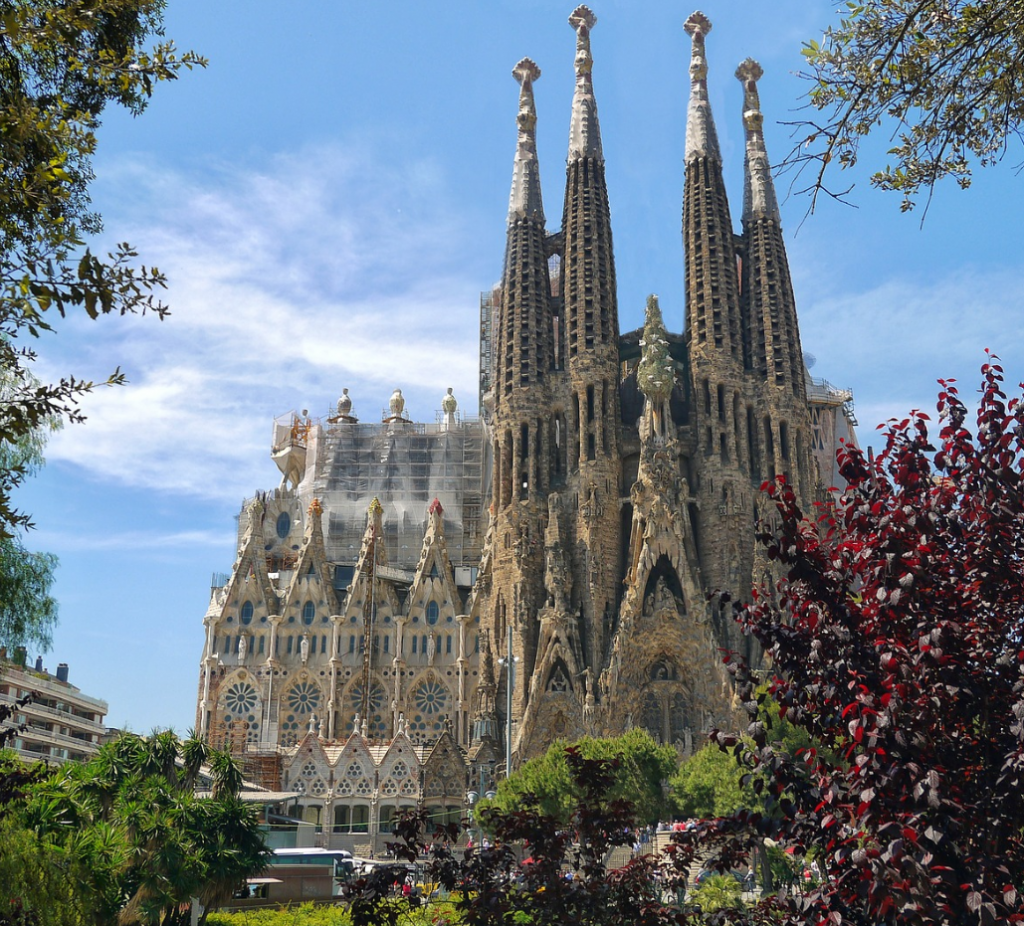
4. Gaudi didn’t start the construction
One of the lesser-known facts about the Sagrada Familia is that Gaudi wasn’t actually the architect who started the work on the church. It was actually “Francisco de Paula del Villar y Lozano” who was commissioned with the work in 1877.
His idea was to build a Neo-Gothic style church, but he abandoned the project when the apse crypt of the church was completed, which was just 1 year after it was started, in 1883.
Francisco de Paula del Villar is known in the area for the construction of multiple Parish churches and most famously his work on the apse of the basilica of the Monastery of Montserrat.
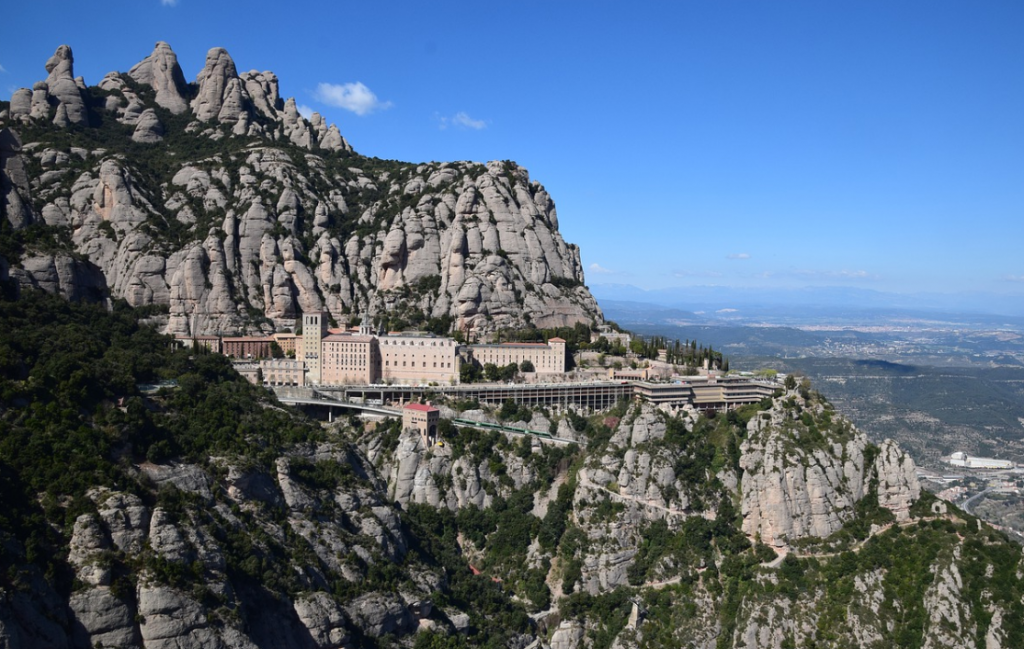
5. Gaudi made quite a few changes to the design
Gaudi had worked before on the Monastery of Montserrat together with del Villar, and when he quit as the architect of the Sagrada Familia, Antoni Gaudi was able to take control of the project in 1883.
Saying that he radically changed the design is an understatement. He was officially appointed as “Architect Director” in the year 1884, and the design of the church was changed from a Neo-Gothic to Gaudi’s typical Catalan Modernist and Art Nouveau style.

6. They weren’t in a hurry to complete the church
The Sagrada Familia can be considered Gaudi’s life work, that for the simple reason that construction went on from the day he took over in 1883 until the day he died in 1926.
One of the most remarkable facts about the Sagrada Familia is that on the day Gaudi, died, the church was only about 15 to 25 % percent complete, that after a 43-year construction period!
When Gaudi was questioned about the slow progress of his project, he simply mentioned: “My client is in no hurry.”
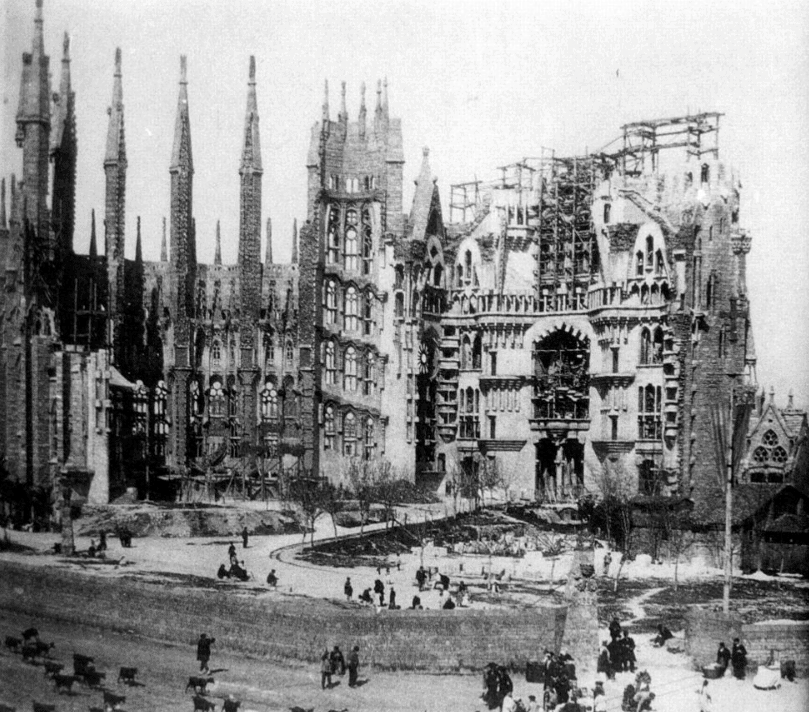
7. Gaudi is buried in the church
Even though less than 25 percent of the church was completed the moment that Gaudi died, he was honored for his work on the Sagrada Familia by being buried inside of it.
His tomb can be found inside the crypt of the church and commemorates the man who spent 43 years of his life dedicated to creating his ultimate masterpiece.
Apart from Antoni Gaudi, the founder of the church, Josep Maria Bocabella, is also buried inside of it.
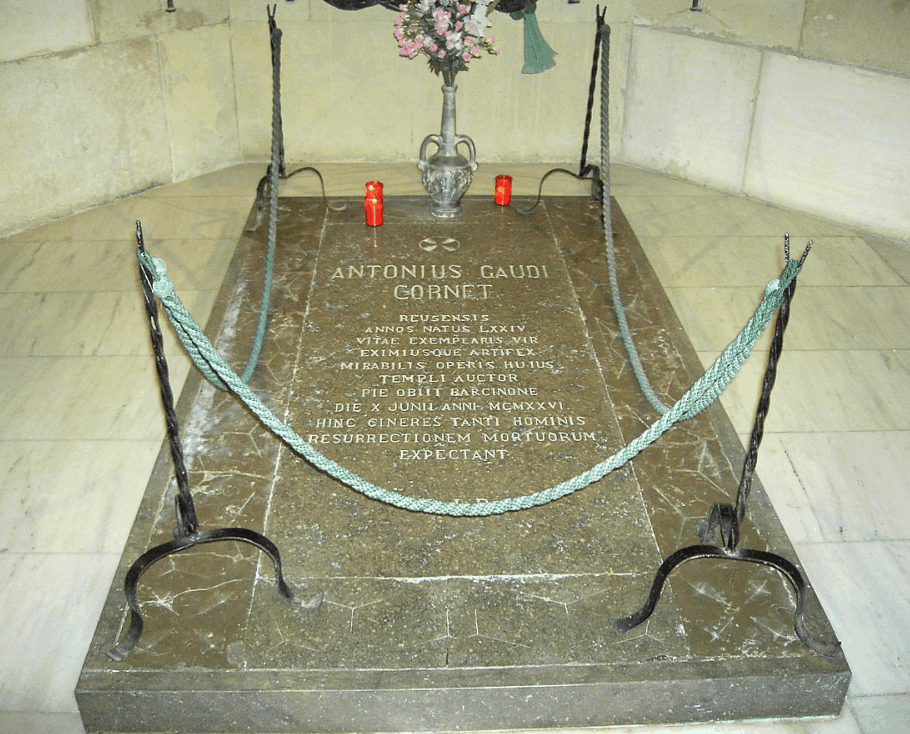
8. Most of Gaudi’s work was actually destroyed
The construction of the church wasn’t just halted by the Spanish Civil War which erupted in 1936, but something equally severe happened as well.
Catalan anarchists managed to break into the chambers inside of the Sagrada Familia which held all the plans, drawings, and plaster models that Gaudi made. They set fire to everything, destroying most of the original work in the process.
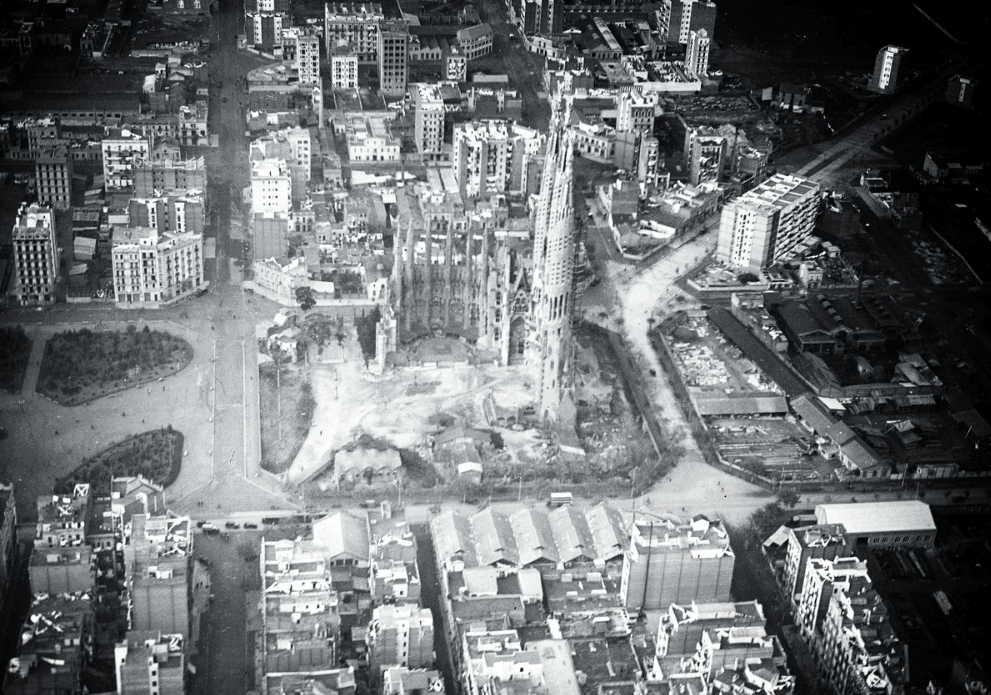
9. Construction was halted for nearly 16 years
The problem with the events during the Spanish Civil War was that the construction was halted for much longer than the duration of the Spanish Civil War (1936-1939).
Reconstructing the original design plans and drawings of Gaudi took about 16 years, so construction of the church was only resumed in the early 1950s.
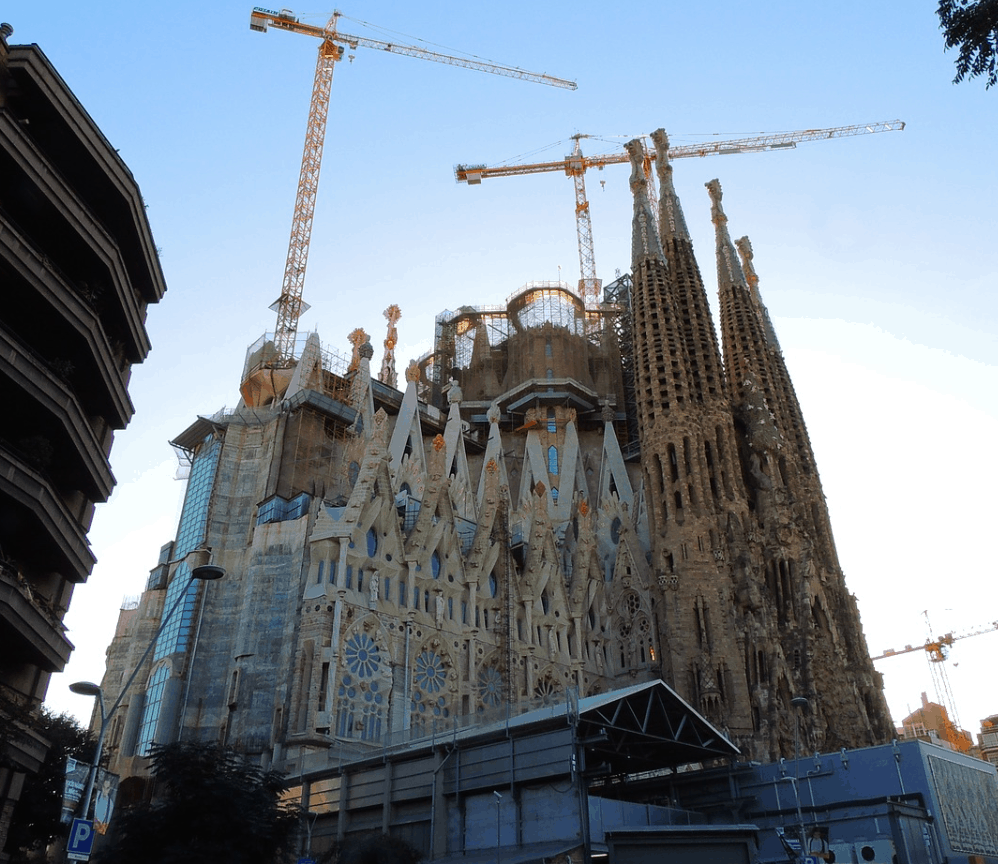
10. The progress didn’t reach 50% until the year 2010
It wasn’t until advancements in technology, such as computer-aided design and computerized numerical control (CNC), were made that the progress of the church really moved forward much faster.
By the year 2010, about 50% of the project was completed and just 5 years later, 70% was completed.
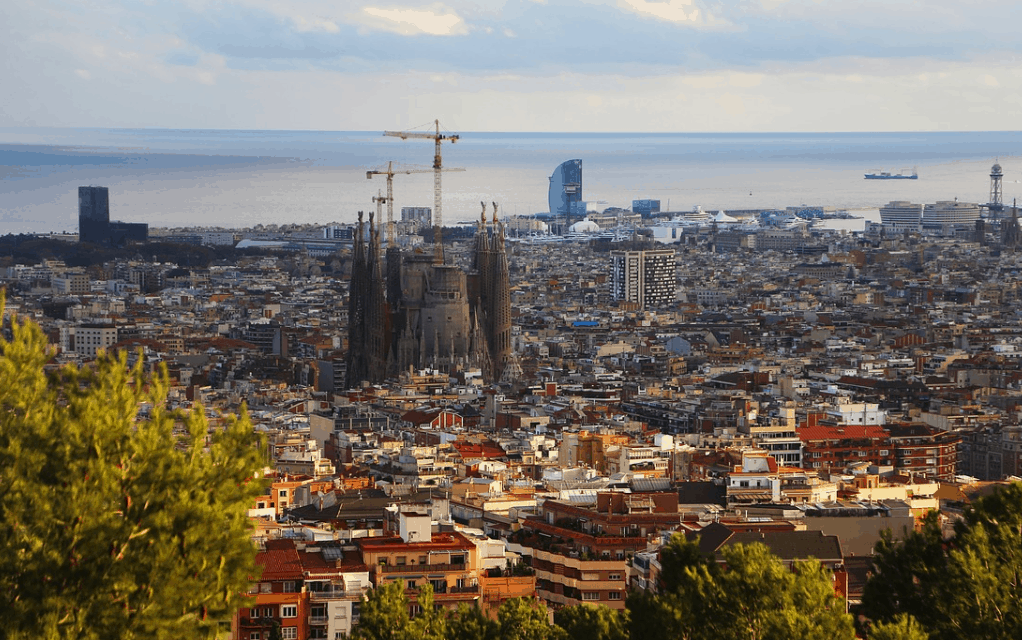
11. When will the Sagrada Familia be completed?
Because of the huge progress that is being made right now, it’s even possible to predict an estimated date of completion.
The goal of the current team working on the project is to complete the main structure by the year 2026, the centennial of Gaudí’s death. The main focus as of now is the raising of the 6 immense steeples.
This doesn’t, however, include the decorative elements, which are estimated to be completed by the year 2032.
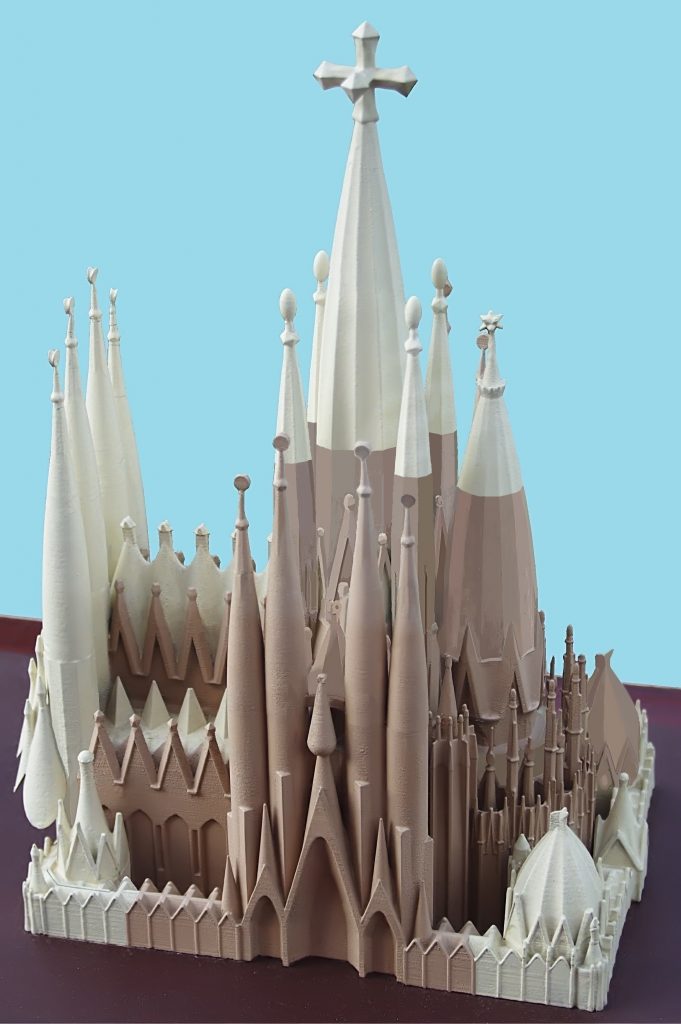
12. It’s wasn’t consecrated until fairly recently
Unlike for example the Sacré-Coeur Basilica in Paris, of which construction started just 8 years before and which was consecrated in 1919, the Sagrada Familia wasn’t consecrated until the year 2010!
It was Pope Benedict XVI who consecrated the church and proclaimed it a Minor Basilica on November 7, 2010. in front of about 6,500 people.

13. The spires represent Biblical figures
Gaudi was a deeply religious man, so the spires of the church are therefore meant to represent Biblical figures.
His original design included a total of 18 spires which represent:
- The Twelve Apostles.
- The Virgin Mary.
- The four Evangelists.
- Jesus Christ.

14. How tall will the highest spire be?
As expected, the highest spire will be the one representing Jesus Christ, and it will be decorated with a huge cross on top of it.
The highest spire will reach a total height of 172.5 meters (566 feet), which is shorter than the highest peak in Barcelona, the Montjuïc hill.
About this Gaudi remarked that “My creation shouldn’t surpass that of God’s.”
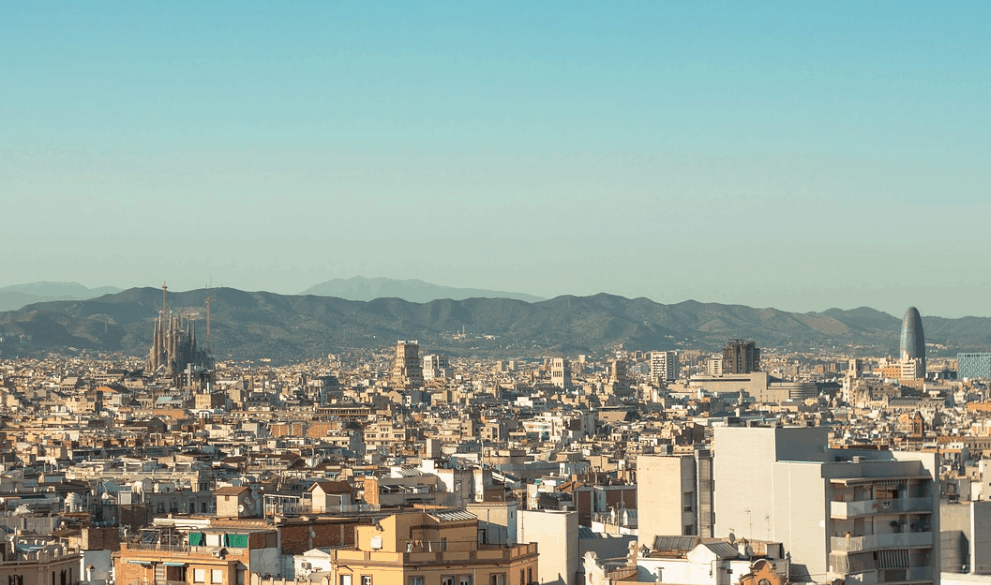
15. The church has 3 façades
The Sagrada Familia will have a total of 3 main façades upon completion. 2 of these façades are already completed, but the main one is still under construction.
The 3 façades are:
The Nativity Façade
This one can be found to the east of the church and was the first one to be completed. It represents the birth of Jesus Christ and is the closest resemblance to Gaudí’s naturalistic style.
It faces the rising sun to the northeast which is a symbolic representation of the birth of Jesus Christ. It also has 3 portico’s which represent religious virtues such as Hope, Faith, and Charity.
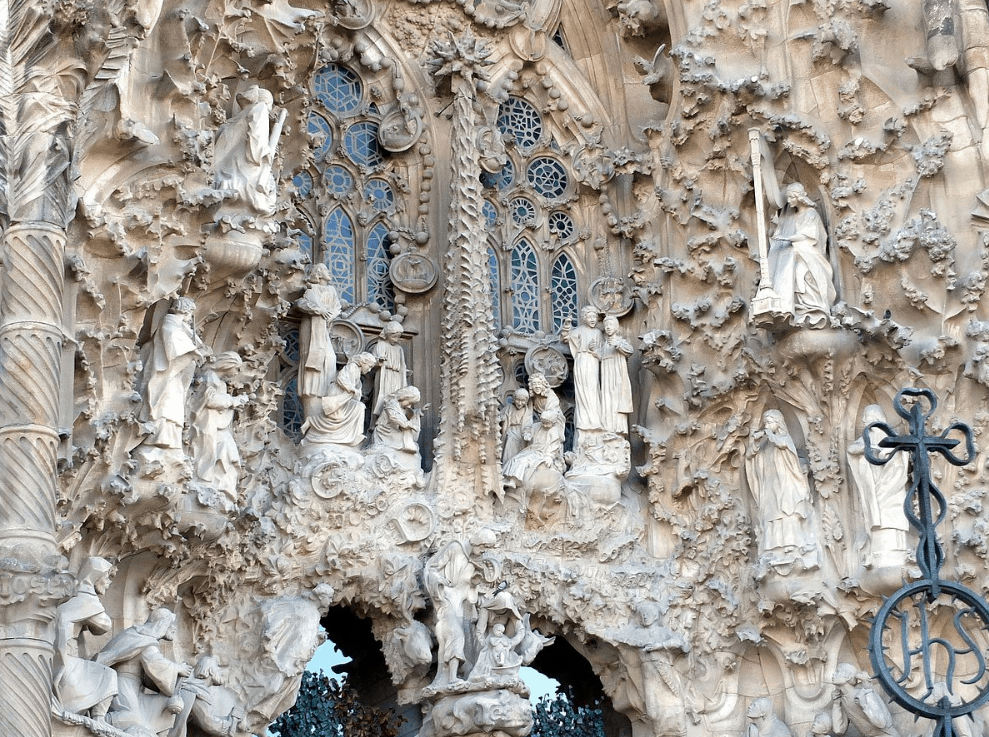
The Passion Façade
The Nativity Façade is highly ornamented with numerous sculptures and representations of various Biblical stories. The Passion Façade, of which construction started in 1954 and which was completed in 1976, in contrast, is completely different as it’s very plain and simple.
This façade faces the setting sun which is representative of the death of Jesus Christ. It has 6 large inclined columns that represent trunks of Sequoia trees and also has 3 portico’s which represent the 3 religious virtues.
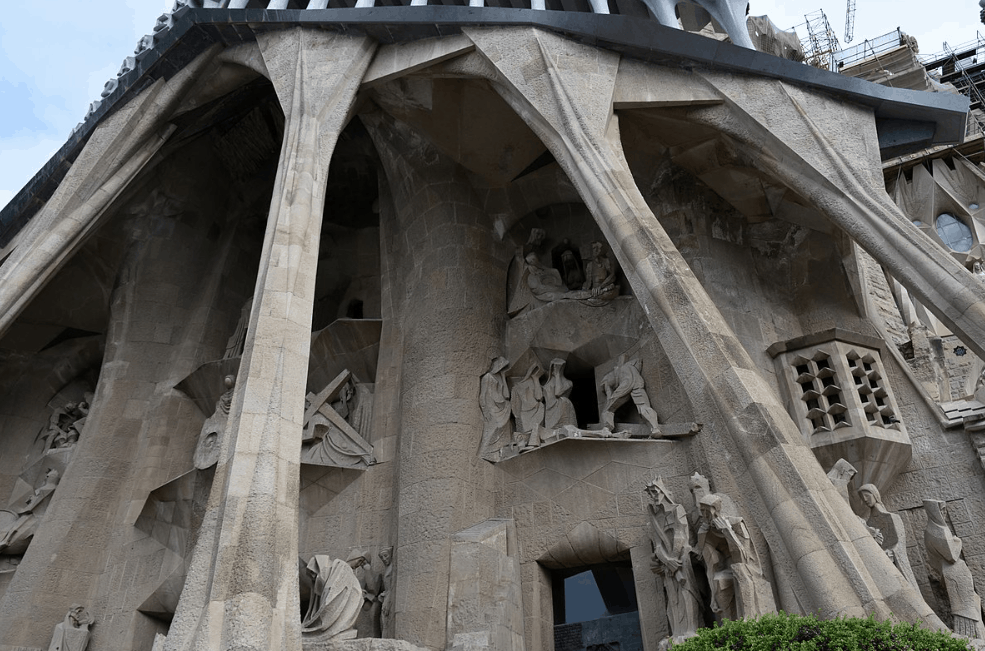
The Glory Façade
Believe it or not, but the Glory Façade, of which construction started in 2002 and is yet to be completed, will be the most striking and impressing façade of the three. It is the façade that grants access to the central nave of the church.
It represents the road to heaven and God and is dedicated to the Celestial Glory of Jesus Christ. The façade will be heavily ornamented with both the 7 deadly sins and the 7 virtues on top of them.
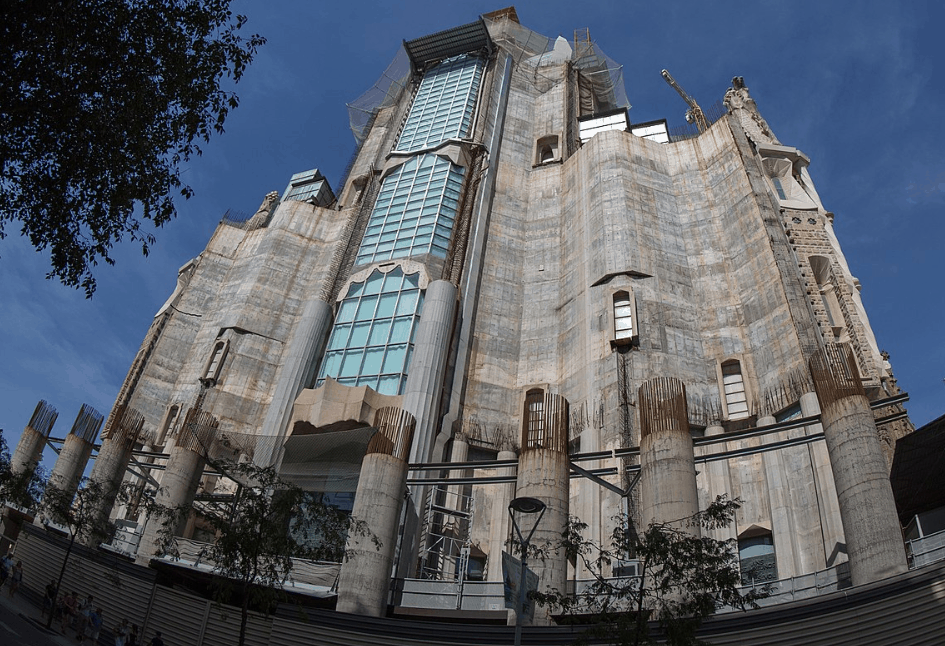
16. The doors of the Glory Façade refer to Antoni Gaudi
The doors of the Glory Façade were installed in the year 2008. The Lord’s Prayer is inscribed into them and the text “Give Us Our Daily Bread” is written on them in 50 different languages.
One of the most interesting facts about the Sagrada Familia is that the door handles are formed with the letters A and G where it states “And lead us not into temptation.”
The letters A and G are a reference to the creator of the church, Antoni Gaudi.
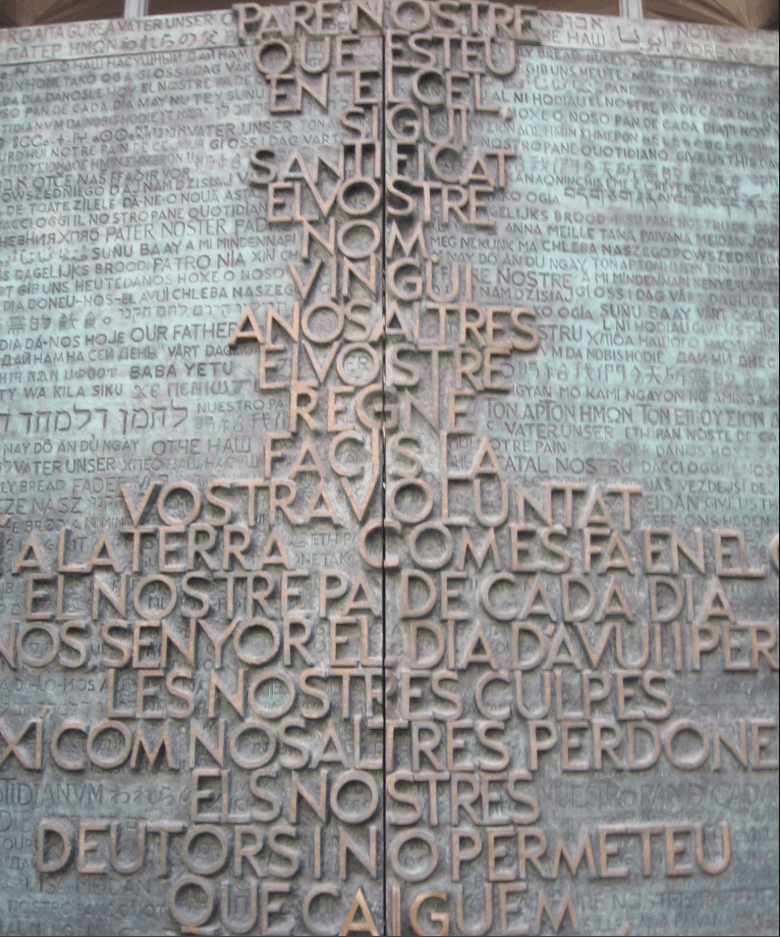
17. There’s a special magic square on the Passion Façade
A magic 4×4 square has the special feature of all numbers on each side adding up to the number 34. The magic square on the Passion Façade of the Sagrada Familia, which was based on the one in the 1514 print Melencolia I, has a different outcome though.
If you add up each row in the magic square, the result always ends up with the number 33. And as we know, the number 3 is important in Christianity as it represents the Holy Trinity.

If there’s one area in the interior design that defines the typical style of Gaudi, it’s most definitely the roof of the central nave of the church.
He created the columns in such a way that they don’t just help to support the load of the structure, but also create a three-dimensional intersection of various geometric forms.
Gaudi intended the people entering the church to stand in awe the moment they set foot inside, which is exactly the effect you’ll experience if you do.

19. It’s a UNESCO heritage site
Along with 6 other works of Gaudi in Barcelona, the Sagrada Familia has been inscribed as a UNESCO World Heritage site since 2005.
It has been inscribed because of “Gaudi’s exceptional creative contribution to the development of architecture and building technology,” and because he has “influenced many of the forms and techniques that were relevant to the development of modern construction in the 20th century.

20. You can go to the top of the steeples
A limited number of people are allowed to make the trip upstairs to the top of either the steeples of the Nativity or the Passion Façades.
Even though it requires taking some stairs, most of the ascend is done with an elevator. Going down is done through a narrow corridor with about 300 steps.
One of the coolest facts about the Sagrada Familia is that the main steeple, which still needs to be built, will also allow access for tourists. This means you’ll be able to get views over the city of Barcelona from a height of over 170 meters (560 feet)!
